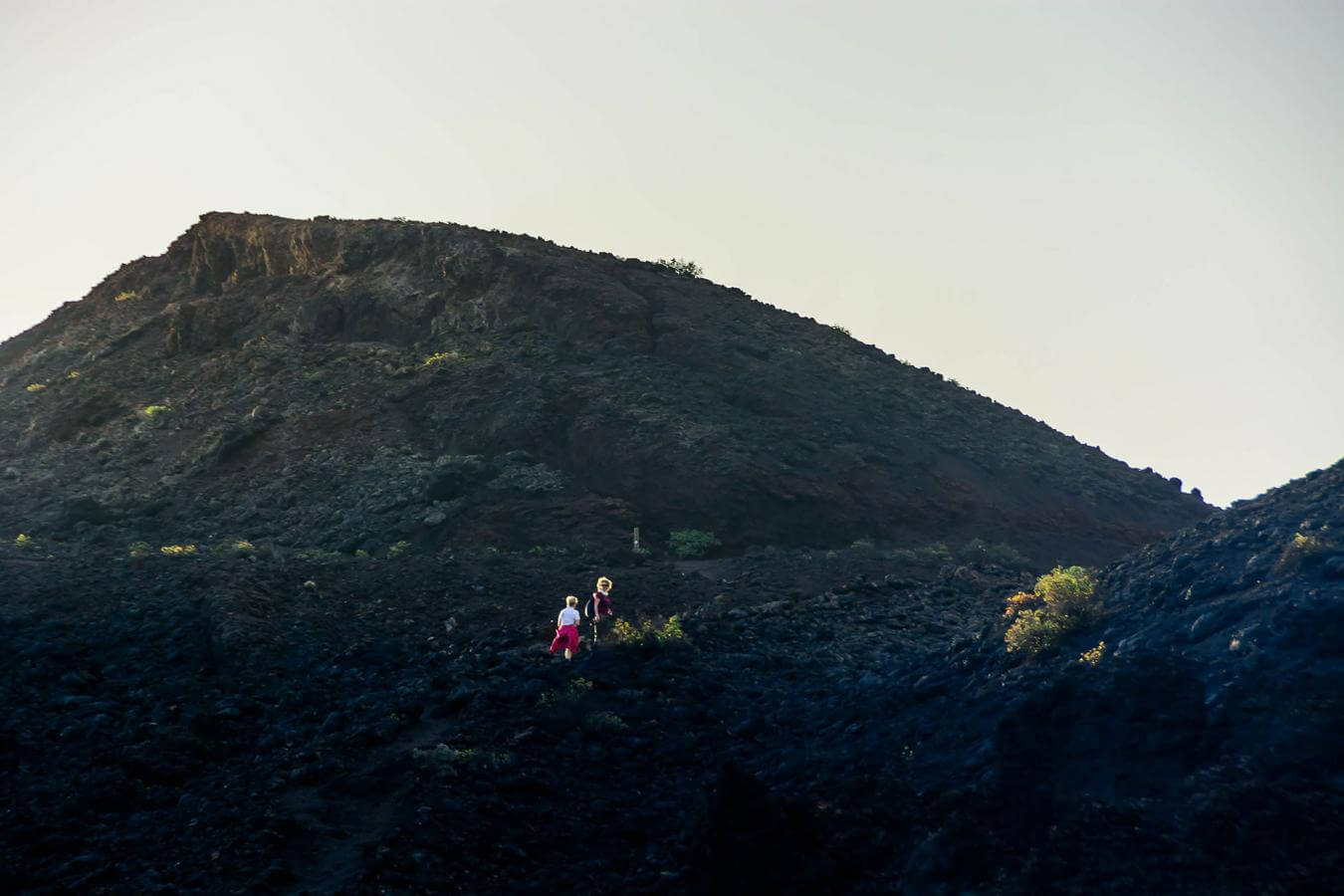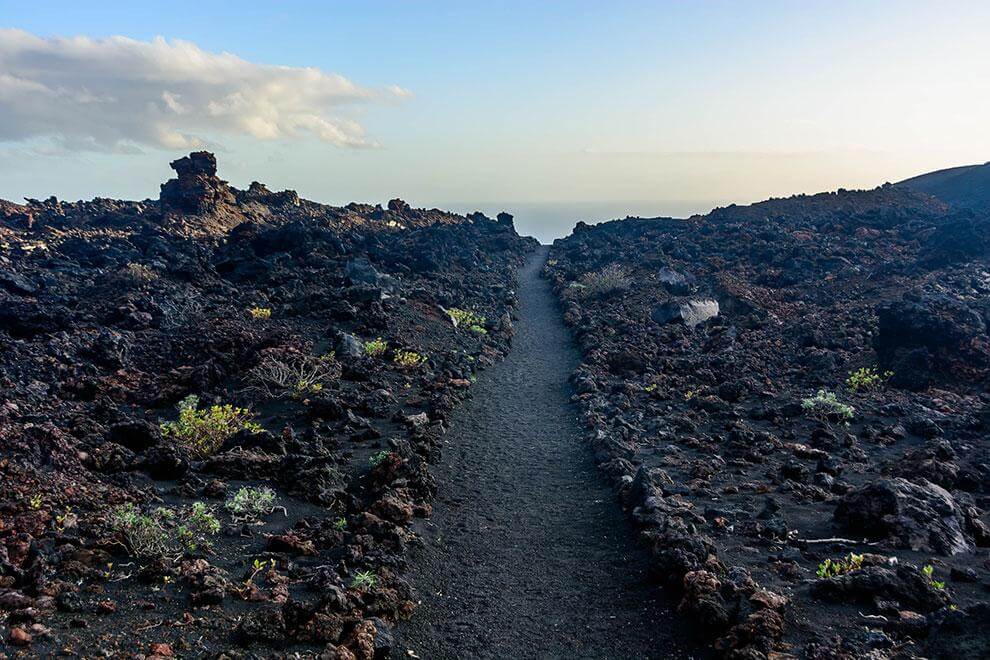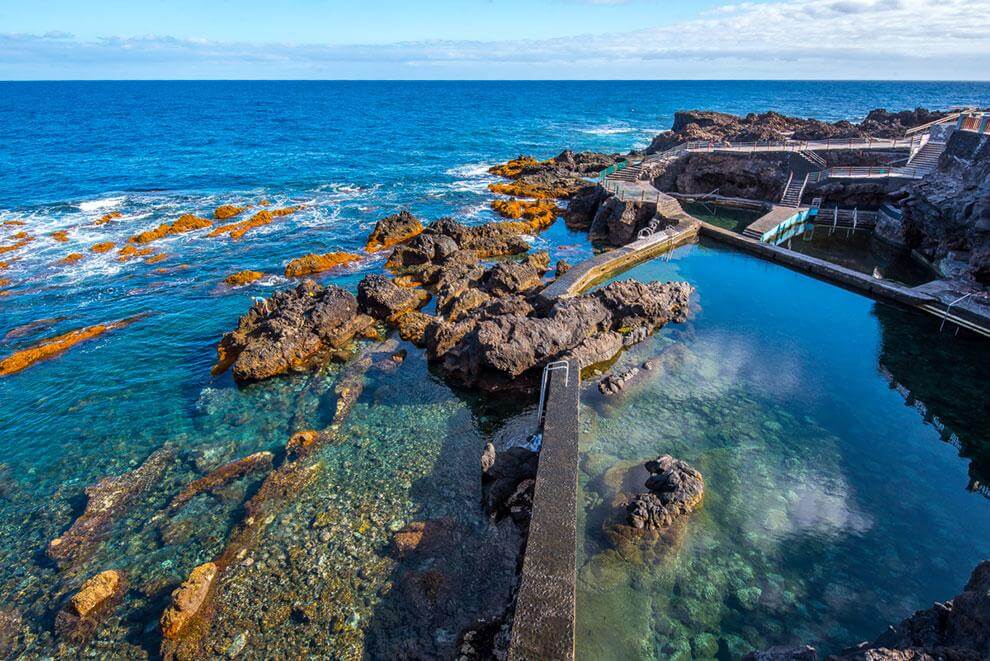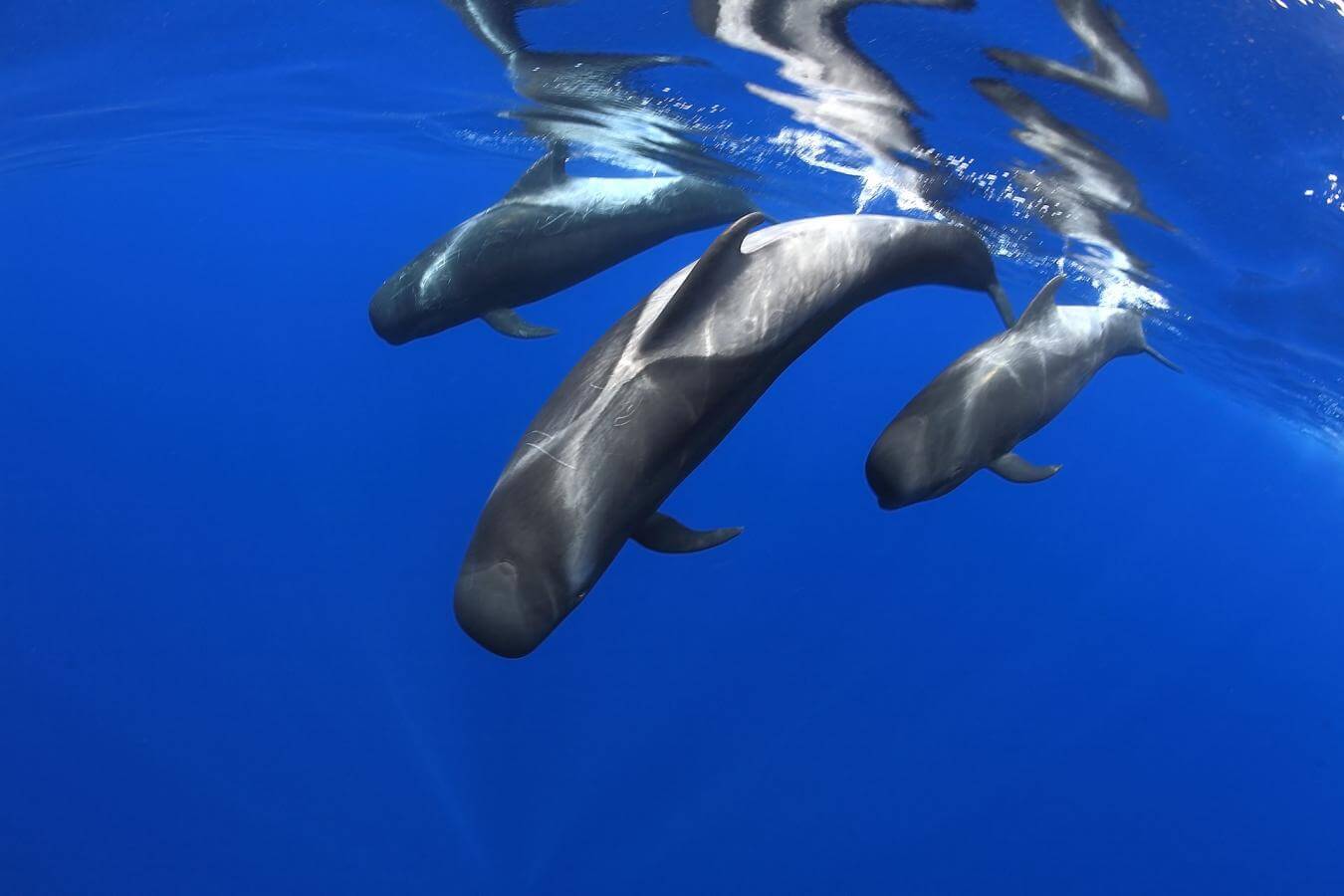La Palma has ancient forests, a beautiful coastline, and a landscape shaped by volcanoes and clear blue skies. UNESCO has recognised the extraordinary natural wealth of the area by designating the island as a Biosphere Reserve. Just as with the rest of the Canary Islands, La Palma has a great climate which has been labelled as an “eternal spring”. Average temperatures of 24º C make La Palma a good choice for family visits at any time of the year.
Families will be astonished by La Palma. The island is known as the “Isla Bonita” which can be translated as the “Beautiful Island”. This name derives from the extraordinary diversity of landscapes on the island.
Caldera de Taburiente: hiking for all the family in the heart of La Palma
The Caldera de Taburiente National Park brings together extraordinary natural beauty. There are imposing slopes and rocky walls. There are ravines, waterfalls, and streams as well as stretches of lush Canarian pine forest. Within the national park there is the Caldera de Taburiente volcanic crater which is more than eight kilometres in diameter and more than 1000 metres deep. There is also a mountain, the Roque de los Muchachos which, at 2,500 metres tall, is the highest point in La Palma. Besides its natural beauty, the Roque de los Muchachos is also known for its clear skies, and it is home to one of the most important astronomical observatory in the world. Tourists arriving to the Caldera de Taburiente National Park should head to the Visitor Centre which is located in the municipality of El Paso. Viewpoints around the national park are accessible by car and offer great panoramas which will excite a child’s sense of adventure.
For families that fancy a bit of a walk, an excursion can begin at the La Cumbrecita viewpoint where signposted paths take visitors through lush vegetation and views of the nearby summits. Walks in this area can stretch for many kilometres, but families looking to get a sense of the atmosphere in the park can choose to wander for just half an hour or so before turning back. There is a camping area close to the La Cumbrecita viewpoint which is great if families want to spend time gazing at the millions of stars that dot the night sky and then crash out in a tent.
Another place in the national park which is great for families is the Los Barros area which is situated in the Los Llanos de Aridane municipality. In this spot there are paths which enter near the Las Angustias ravine. The routes are pretty flat and offer visitors magical views of waterfalls.












Sweet gastronomy
Almond trees dot the landscape of La Palma with their white blossom during Spring. In La Palma almonds are an important ingredient in tasty sweets which delight the palate. Almonds were traditionally cultivated in the municipalities of Garafía, Puntagorda, and El Paso, and these parts of the island are great places to visit during a sweets tour of La Palma. Artisans – using methods of sustainable agriculture – make almond pastries with wood-fired ovens all year round, and many of them sell their high quality products at market. Many markets, such as the Puntallana Farmer's Market, have special areas which have been designed to entertain children with slides, swings, free play areas, and reading workshops.






Art and carnivals on the streets of Los Llanos de Aridane
The streets of Los Llanos de Aridane are like a contemporary art gallery. Visitors can admire work by avant-garde artists such as Fernando Bellver, Ceesepe, and Javier Mariscal on the facades of the buildings that surround the Iglesia de Nuestra Señora de Los Remedios church. Parents and children alike will be astonished by the enormous brightly coloured art work which cover buildings.
Besides the street art, Los Llanos de Aridane is also famous for its carnival. Polvacera de Colores takes place on “el Día Grande”, or “the Big Day, during the “Fiestas de Invierno”, or “Winter Festival”. This celebratory procession involves masked revellers travelling down the streets in floats. White powder is thrown into the air and big booming drums called batucadas reverberate. The centre of the parade is a multi-coloured cannon which lies in wait in the town square. The Polvacera de Colores carnival is a great opportunity for the whole family to dress up and enter a fantasy world.






Get lost in the Los Tilos Forest
Los Tilos is a place which allows children to discover a fairy tale forest. The forest grounds abound in startling natural scenes which will stir a child’s imagination. There are enormous trees, mystical tunnels, and beautiful streams. The Los Tilos Forest, located in San Andrés y Sauces, grants visitors a rare opportunity to enter a laurel forest. Millions of years ago, laurel forests abounded on planet earth, but now there are only a few left. The Los Tilos Forest is a natural paradise which visitors will fall in love with straight away. The jungle is a quiet place full of trails which snake in and out of smooth aromatic leaves. Before starting a tour of the forest visitors are asked to inquire at the Los Tilos Visitor Centre. Here tourists will be advised as to the most suitable walking paths for a family visit.



San Antonio and Teneguía Volcanoes
The San Antonio Volcano Visitor Centre is located in Fuencaliente. The centre offers text and video based exhibits which outline the unusual geological history of La Palma. The centre also contains an earthquake simulator which offers a bone shaking visitor experience that will impress both young and old. Visits to the the San Antonio volcano can include a pleasant walk. There are paths which skirt the huge volcanic crater then rise to viewpoints which showcase one of the most beautiful panoramas in the Canary Islands. Included in the view is the Teneguía volcano which, after discharging in 1971, is the last volcano to have erupted in La Palma.












Swim in dream beaches
Every family will find their ideal beach in La Palma. On the island there are tranquil bays, wild shorelines, and natural swimming pools. There are places for relaxation and spots famed for water sports. For example, Charo Verde, close to Puerto Naos, is a black sandy cove wedged between cliffs and banana trees. The waters in this part of La Palma are always calm which makes them ideal for children to have a go at kayaking or scuba diving. A nearby beach bar offers plenty of drinks to keep everyone cool. Another great spot in La Palma can be found in La Fajana. The natural swimming pools in this part of the island are one of the calmest places to take a dip with the family. The pools are large in size and protected from waves and currents. Kids have a great time splashing about.






Go sailing
Sailing around the coast of La Palma offers a unique spectacle: the chance of seeing a wide variety of marine mammals, such as whales and dolphins, in their natural habitat. Fun is guaranteed with boat trips from Tazacorte Harbour or by kayak from various points on the island's coastline.






Visit El Barco de la Virgen
The Naval Museum of Santa Cruz de La Palma is one of the most visited sites in La Palma. It is located inside the Barco de la Virgen, an enormous replica ship designed in 1940 as part of a section of the Lustrales Festival called the Bajada de la Virgen. The monument, made with the specifications of Christopher Columbus’ sixteenth century ship the Santa Maria, startles passers-by. It just doesn’t seem right to see such an old ship stranded in the middle of a city. Visitors will get the chance to stroll along the decks of the Barco de la Virgen. Children and parents will get the opportunity to imagine what it would have been like to live in the old world alongside sailors, pirates, and corsairs.The history of La Palma is the history of pirates. Ships like the Pata de Palo, which besieged the city in 1535, still live in the memory of the local people. In the month of August this piratical history is celebrated with the Corsair Festival which gives kids the chance to dress up as pirates with a patch and sword and take part in a procession.






Have fun in the Maroparque
Maroparque is a park designed for the conservation of a wide variety of exotic animals many of whom are in danger of extinction. In the 7000 square metre site there are marmosets, crocodiles, snakes, coatis, ostriches, monkeys, and even albino kangaroos. Visitors to the Maroparque will not only astonished by the extraordinary looking animals. The park is also notable for the range of plants and flowers which colour the surroundings. There are also magnificent views of nearby islands and the Atlantic Ocean which stretches off into the distance. The Maroparque is well designed for visitors and includes a restaurant and cafeteria.
Follow the path of the stars
Astrotourists travel the world in search of space related experiences, and La Palma is one of the world’s favourite astrotourism destinations thanks to the exceptional quality of its sky. So that visitors and locals can enjoy the best possible experience of the sky, a network of viewpoints have been established on the island. Each viewpoint includes informative panels which give visitors the data they need to understand more about the constellations, the planets, the moon, and events such as equinoxes and solstices. For children La Palma is a great opportunity to discover for the first time Polaris, Ursa Major, and Ursa Minor. First hand experience of the marvels of space could spark an interest in science. La Palma is a great place to introduce young people to the strange animal shapes in the constellations and the possibility of life existing outside of Planet Earth.









